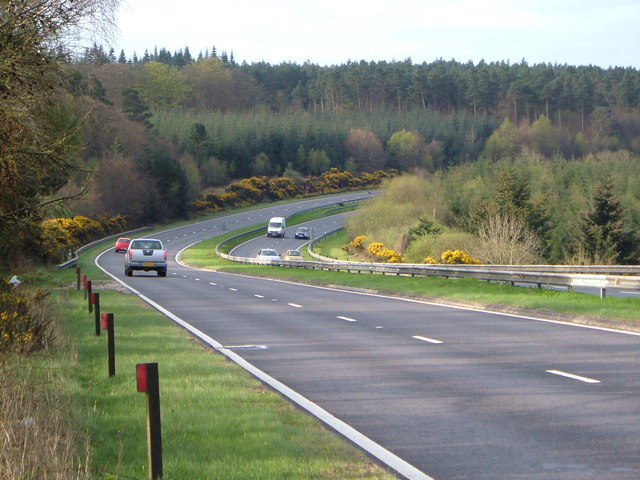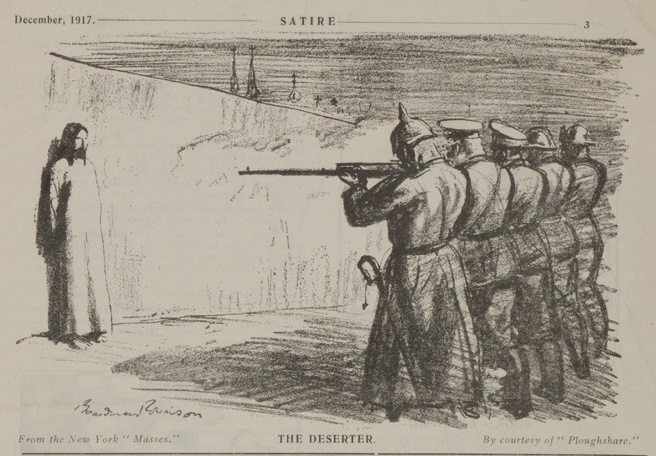|
Haldon Belvedere
Haldon Belvedere or Lawrence Tower is a triangular tower in the Haldon Hills in the county of Devon, England. Haldon Belvedere is in the parish of Dunchideock within the former Haldon estate, about a mile south-west of Haldon House. Its location on the ridge of the Haldon Hills gives it extensive views and means it is a prominent landmark for many miles around.Cherry & Pevsner, p.342 It was built in 1788 by Sir Robert Palk, 1st Baronet and was originally called Lawrence Tower in honour of his friend and patron General Stringer Lawrence (1697–1775). Lawrence spent much of his retirement at Haldon and was buried in Dunchideock church, in which Palk erected a monument to his memory, having received a bequest of £50,000 in his will. Stringer Lawrence's other monument is in Westminster Abbey, erected by the East India Company. The tower, 26 metres high, is triangular with Gothic windows and full-height circular angle turrets, and was probably influenced by the triangular tower at ... [...More Info...] [...Related Items...] OR: [Wikipedia] [Google] [Baidu] |
Stringer Lawrence
Major-General Stringer Lawrence (February 1698–10 January 1775) was an English soldier, the first Commander-in-Chief of Fort William. Origins Lawrence was born at Hereford, England, the son of John Lawrence of Hereford by his wife Mary, about either of whom little is known. He was baptised in the Church of All Saints, Hereford, on 27 February 1697 (Old Style). Concerning his possible ancestry, in 1660 "James Lawrence, junior, gentleman", was admitted to the freedom of the City of Hereford, and became Mayor in 1661. In 1682 "John Lawrence, apothecary", and in 1702 "John Lawrence, brewer", were admitted to the freedom of the city. In the opinion of Biddulph (1901) one of these last "must, almost certainly, have been the father of Stringer Lawrence". In the All Saints' Church burial register is recorded the burial of a certain Michael Stringer on 13 November 1698, from which fact Biddulph (1901) presumed that Stringer was the maiden name of his mother. Career He seems to have e ... [...More Info...] [...Related Items...] OR: [Wikipedia] [Google] [Baidu] |
Haldon Hills
The Haldon Hills, usually known simply as Haldon, is a ridge of high ground in Devon, England. It is situated between the River Exe and the River Teign and runs northwards from Teignmouth, on the coast, for about until it dwindles away north west of Exeter at the River Yeo, just south of Crediton. The highest points of just over 250 metres (820 ft) lie to the south west of Exeter. The southernmost part is known as Little Haldon; it is partially separated from the main bulk of the hills by a col formed by the valleys of the Dawlish Water to the east and the valley at Rixdale to the west. Geology Haldon is composed of New Red Sandstone covered by a more resistant layer of Upper Greensand. On the highest ground is a layer of gravel containing many flints that is up to 18 metres (60 ft) deep; it is all that remains of a cover of chalk some 180 metres (600 ft) thick that was deposited during the Late Cretaceous and then dissolved away during the tro ... [...More Info...] [...Related Items...] OR: [Wikipedia] [Google] [Baidu] |
Conscientious Objector
A conscientious objector (often shortened to conchie) is an "individual who has claimed the right to refuse to perform military service" on the grounds of freedom of thought, conscience, or religion. The term has also been extended to objecting to working for the military–industrial complex due to a crisis of conscience. In some countries, conscientious objectors are assigned to an alternative civilian service as a substitute for conscription or military service. A number of organizations around the world celebrate the principle on May 15 as International Conscientious Objection Day. On March 8, 1995, the United Nations Commission on Human Rights resolution 1995/83 stated that "persons performing military service should not be excluded from the right to have conscientious objections to military service". This was re-affirmed on April 22, 1998, when resolution 1998/77 recognized that "persons lreadyperforming military service may ''develop'' conscientious objections". ... [...More Info...] [...Related Items...] OR: [Wikipedia] [Google] [Baidu] |
Nikolaus Pevsner
Sir Nikolaus Bernhard Leon Pevsner (30 January 1902 – 18 August 1983) was a German-British art historian and architectural historian best known for his monumental 46-volume series of county-by-county guides, ''The Buildings of England'' (1951–74). Life Nikolaus Pevsner was born in Leipzig, Saxony, the son of Anna and her husband Hugo Pevsner, a Russian-Jewish fur merchant. He attended St. Thomas School, Leipzig, and went on to study at several universities, Munich, Berlin, and Frankfurt am Main, before being awarded a doctorate by Leipzig in 1924 for a thesis on the Baroque architecture of Leipzig. In 1923, he married Carola ("Lola") Kurlbaum, the daughter of distinguished Leipzig lawyer Alfred Kurlbaum. He worked as an assistant keeper at the Dresden Gallery between 1924 and 1928. He converted from Judaism to Lutheranism early in his life. During this period he became interested in establishing the supremacy of German modernist architecture after becoming aware of Le ... [...More Info...] [...Related Items...] OR: [Wikipedia] [Google] [Baidu] |
Bridget Cherry
Bridget Cherry OBE, FSA, Hon. FRIBA (born 17 May 1941) is a British architectural historian who was series editor of the Pevsner Architectural Guides from 1971 until 2002, and is the author or co-author of several volumes in the series.CHERRY, Bridget Katherine ''Who's Who 2015'', A & C Black, 2015; online edn, Oxford University Press, 2014 Family and education Cherry is the elder sister of the Henry Marsh. She studied history at |
Hannah More
Hannah More (2 February 1745 – 7 September 1833) was an English religious writer, philanthropist, poet and playwright in the circle of Johnson, Reynolds and Garrick, who wrote on moral and religious subjects. Born in Bristol, she taught at a school her father founded there and began writing plays. She became involved in the London literary elite and a leading Bluestocking member. Her later plays and poetry became more evangelical. She joined a group opposing the slave trade. In the 1790s she wrote Cheap Repository Tracts on moral, religious and political topics, to distribute to the literate poor (as a retort to Thomas Paine's Rights of Man). Meanwhile, she broadened her links with schools she and her sister Martha had founded in rural Somerset. These curbed their teaching of the poor, allowing limited reading but no writing. More was noted for her political conservatism, being described as an anti-feminist, a "counter-revolutionary", or a conservative feminist. Early life Bo ... [...More Info...] [...Related Items...] OR: [Wikipedia] [Google] [Baidu] |
Oxton, Kenton
Oxton in the parish of Kenton in South Devon is a historic estate long held by the Martyn family, a junior branch of the Norman family of FitzMartin, feudal barons of Barnstaple. Oxton House is a Grade II listed building. The park and gardens are Grade II listed in the National Register of Historic Parks and Gardens. Features *Hermitage. Rev. Swete created a Gothic hermitage within a quarry on the estate, now a Grade II listed structure. It comprises a chamber with a small window with bench and pillow cut from the stone, reached by an arched entrance. *A picturesque ruined Gothic arch was built by Rev. Swete to the north of the lodge in about 1790, but was demolished in the mid 20th century. Descent Martyn The later descent of Martyn of Oxton is as follows: *Sir Nicholas Martyn (1593–1654) of Oxton, MP for Devon (1646–1654) and Sheriff of Devon in 1640, whose monument survives in Kenton Church. *William Martyn (1626–1662) of Netherexe and Oxton (son) *Nicholas Martyn ... [...More Info...] [...Related Items...] OR: [Wikipedia] [Google] [Baidu] |
John Swete
Rev. John Swete (born John Tripe) (baptised 13 August 1752 – 25 October 1821) of Oxton House, Kenton in Devon, was a clergyman, landowner, artist, antiquary, historian and topographer and author of the ''Picturesque Sketches of Devon'' consisting of twenty illustrated journals of Devonshire scenery.Published in four volumes as ''Travels in Georgian Devon: The Illustrated Journals of the Reverend John Swete, 1789–1800'', edited by Todd Gray and Margery Rowe (Halsgrove, 1997). He was a connoisseur of landscape gardening, and much of his ''Travel Journals'' consist of his commentary of the success or otherwise of the landscaping ventures of his gentry friends, neighbours and acquaintances in Devon. He himself undertook major building and landscaping works at Oxton. Biography John Tripe was born in 1752, the son Nicholas Tripe, a surgeon in Ashburton, Devon, by his wife Rebecca Yard, according to Swete's ''Journal'' a member of the ancient Devonshire gentry family of Yard of ... [...More Info...] [...Related Items...] OR: [Wikipedia] [Google] [Baidu] |
Listed Building
In the United Kingdom, a listed building or listed structure is one that has been placed on one of the four statutory lists maintained by Historic England in England, Historic Environment Scotland in Scotland, in Wales, and the Northern Ireland Environment Agency in Northern Ireland. The term has also been used in the Republic of Ireland, where buildings are protected under the Planning and Development Act 2000. The statutory term in Ireland is " protected structure". A listed building may not be demolished, extended, or altered without special permission from the local planning authority, which typically consults the relevant central government agency, particularly for significant alterations to the more notable listed buildings. In England and Wales, a national amenity society must be notified of any work to a listed building which involves any element of demolition. Exemption from secular listed building control is provided for some buildings in current use for worship, ... [...More Info...] [...Related Items...] OR: [Wikipedia] [Google] [Baidu] |
Lucinda Lambton
Lady Lucinda Lambton, also known as Lady Lucinda Worsthorne (born 10 May 1943) is an English writer, photographer, and broadcaster on architectural subjects. Life Lucinda Lambton was born in Newcastle upon Tyne, the eldest child of the Conservative defence minister Lord Lambton.Durham, Earl of (UK, 1833) cracroftspeerage.co.uk, accessed 7 October 2020 The family lived in County Durham and London, where her sister Anne Lambton, later to become an actress, was born in 1954. Lambton spent six years at [...More Info...] [...Related Items...] OR: [Wikipedia] [Google] [Baidu] |




